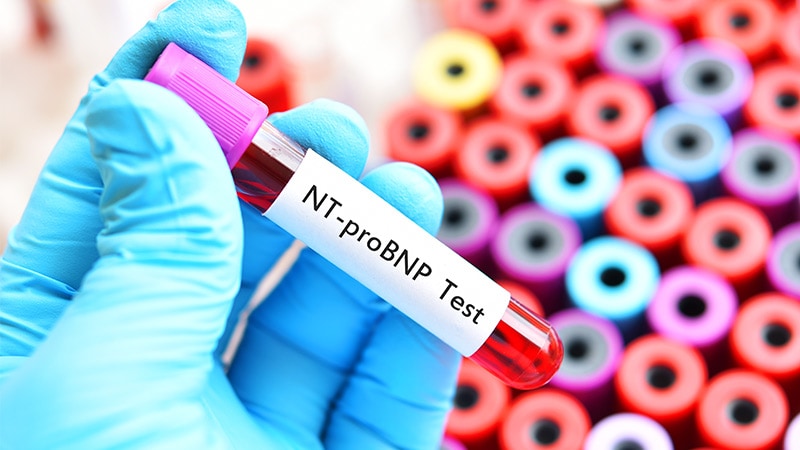The study covered in this summary was published on SSRN.com as a preprint and has not yet been peer reviewed.
Key Takeaway
-
Higher levels of N-terminal pro-B-type natriuretic peptide (NT-proBNP) in patients with acute type-A aortic dissection can independently predict acute or 1-year mortality.
Why This Matters
-
NT-proBNP may potentially contribute to risk stratification of patients with type-A aortic dissection and clinical decision-making as a user-friendly and incrementally prognostic biomarker.
Study Design
-
The prospective, observational, single-center cohort study enrolled 829 patients with acute type-A aortic dissection from January 2018 to December 2020.
-
Acute aortic dissection was diagnosed by aortic CT angiography. It was classified as type A if it involved the ascending aorta regardless of the primary intimal tear’s location, per convention.
-
Risk for outcomes was defined by tertiles of NT-proBNP levels: low risk, up to 150.3 pg/mL; intermediate risk, 150.3 to 667.6 pg/mL; and high risk, higher than 667.6 pg/mL.
-
The primary endpoint was defined as death from any cause within 30 days of symptom onset; secondary endpoints included death from any cause at 1 year.
-
Continuous variables were assessed using Student t-test or Mann-Whitney U test, as appropriate. Categorical variables were compared using chi-square test or Fisher’s exact test, as appropriate.
Key Results
-
The median NT-proBNP levels by tertile were 74.0 (IQR, 40.7 – 105.4) for low-risk patients, 308.0 (IQR, 219.0 – 444.9) for those at intermediate risk, and 1490.5 (IQR, 974.3 – 3108.5) in the high-risk group, respectively.
-
Adjusted hazard ratios for 30-day mortality, compared to low-risk patients, were 1.57 (P = .08) and 2.19 (P = .007) for intermediate-risk and high-risk patients, respectively (P for trend = .007).
-
Median NT-proBNP levels in 30-day survivors vs nonsurvivors were 248 pg/mL and 482 pg/mL; for 1-year survivors vs nonsurvivors, it was 236.3 pg/mL and 517.2 pg/mL, respectively.
-
The best cutoff value for NT-proBNP for predicting 30-day mortality was 192.7 pg/mL (area under the curve, 0.62; P < .001).
-
Adding NT-proBNP levels to clinical risk factors for 30-day mortality significantly improved discrimination and reclassification power (P < .001 for both).
Limitations
-
The single-center study was observational and therefore subject to residual confounding.
-
Follow-ups were relatively short-term.
-
The impact of NT-proBNP levels on quality-of-life measures and ischemic events could not be determined.
-
Levels of NT-proBNP were not obtained serially, so the impact of changing levels on outcomes could not be evaluated.
Disclosures
-
This study was funded by the CAMS Innovation Fund for Medical Sciences and the National Natural Science Foundation of China.
-
The authors have disclosed no relevant financial relationships.
This is a summary of a preprint research study, “Clinical Implication of N-Terminal Pro-B Type Natriuretic Peptide to Predict Mortality in Patients With Acute Type A Aortic Dissection: A Prospective Cohort Study,” written by Shuai Liu from the Cardiometabolic Medicine Center, Fuwai Hospital, National Center for Cardiovascular Diseases, Chinese Academy of Medical Sciences and Peking Union Medical College, Beijing, China, and colleagues, published on SSRN.com, and provided to you by Medscape. This study has not yet been peer reviewed. The full text of the study can be found SSRN.com.
For more news, follow Medscape on Facebook, Twitter, Instagram, and YouTube.
Source: Read Full Article
